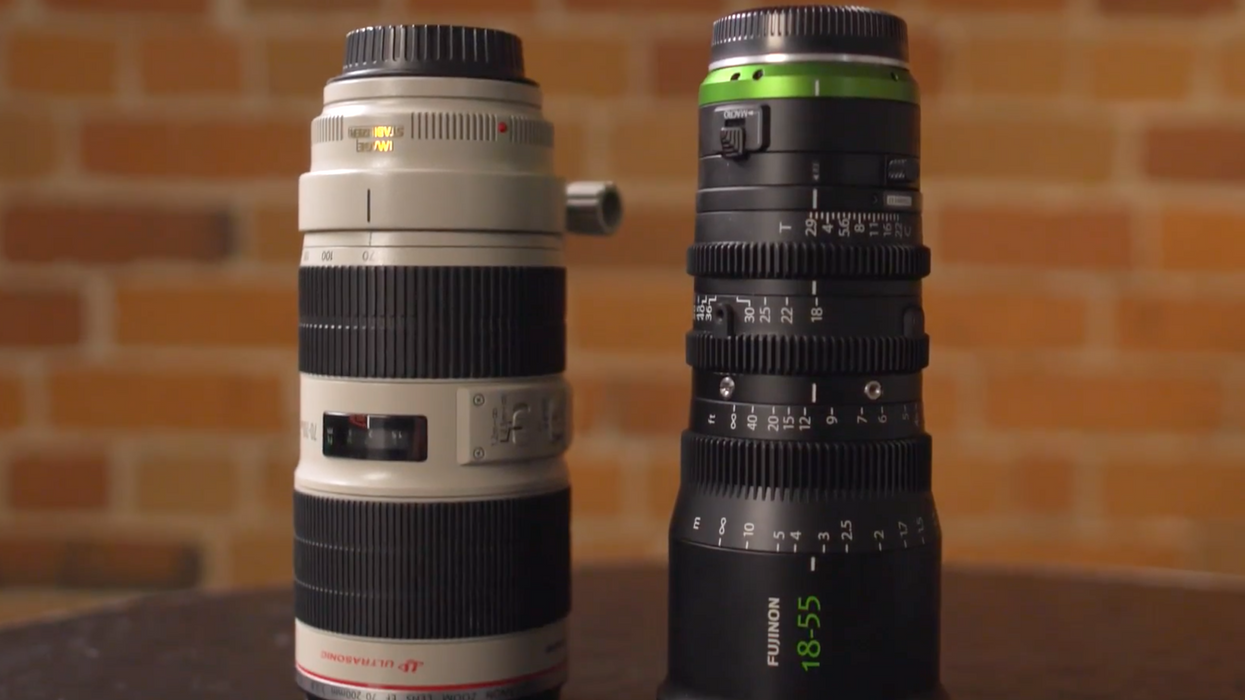Back to the Future: Fujinon’s MK Zooms Bring Parfocal Performance to Indie-Friendly DSLR Prices
With the MK line, Fujinon has a true parfocal lens series at a budget indies will love.

Filmmakers took parfocal lenses (zooms that hold focus) for granted for many years, but the DSLR revolution meant many got used to living without the zoom feature (varifocal). Finally, parfocals are back with the new Fujinon MK line at affordable prices for filmmakers.
For filmmakers on a budget, here are two main takeaways about parfocal, and the MK in particular, to remember.
Parfocals maintain focus
When learning to use a motion camera, the practice of "zoom in, check focus, zoom out" is often the first habit ingrained in the operating process. For any busy shoot where you aren't working with a 1st AC, the ability for operators to grab their own focus with a quick zoom check is a real lifesaver. Even when working with focus assistants, doing a slow zoom out requires a lens that keeps its focus through the zoom range.
Working with an integrated lens video camera like the UX180, parfocal is taken for granted, but when you go for the image quality bump of a DSLR, you often end up with a varifocal still lens. With varifocal lenses, holding focus through a long zoom just isn't possible, since the focus changes when you change the focal length.

Most frustrating of all is the fact that on small DSLR screens, it's often impossible to see the slight shifts in focus, setting you up to potentially miss an out of focus shot.

Parfocals are great for breathing
Parfocal lenses generally offer significant benefits for breathing. Since a still photo lens is designed to be used for only one instance in time, it doesn't matter if a lens breathes—you aren't going to see it. Since it doesn't matter, designers don't bother to compensate for it, and other areas of lens design get prioritized.
However, filmmakers frequently rack focus, and breathing can be a distraction to audiences, so a parfocal lens is worth getting your hands on even if you aren't planning to have zooms occur during the shot (and if you prefer to get your focus marks the old-fashioned way).

Summary
The MK, in particular, is roughly 1/10th the cost of other cinema-style parfocal zoom lens with a similar range. With the DSLR revolution, many filmmakers went with still photo varifocal lenses in order to have a zoom option they could afford and learned to overlook the drawbacks. But now, Fujifilm/Fujinon is offering a lens with the traditional benefits of a true cine style zoom at a cost that aligns more closely with comparable varifocal glass.

We ran a full review of the MK 18-55 zoom lens a month ago and were thoroughly impressed with its performance, especially at the price point. The combination of its light weight, cinema-style design, constant aperture, and durability make it a lens with the potential to be as revolutionary as the original 5D—it will show you what the next wave is going to look like.
The lens is currently available E-mount. X-mount and a longer telephoto zoom is coming soon. Watch a full video review from Vistek that goes into detail about the great features of parfocal.











